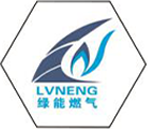
Sep . 22, 2024 08:05
Back to list
صمام تنظيم
The Role of Pressure Regulating Valves in Industrial Applications
Pressure regulating valves, known as صمام تنظيم in Arabic, play a crucial role in various industrial applications, ensuring that systems operate safely and efficiently
. These valves are designed to maintain a preset outlet pressure, allowing for consistent and stable operations, which is vital in processes across manufacturing, oil and gas, and water management sectors.At its core, the pressure regulating valve functions by automatically adjusting the flow of fluids within a system. When the inlet pressure exceeds a predetermined level, the valve opens or closes accordingly to regulate the pressure downstream. This automatic adjustment is essential to prevent equipment damage, ensure safety, and enhance operational efficiency.
One of the primary benefits of using pressure regulating valves is the protection they offer to sensitive equipment. Many machines and systems are engineered to operate within specific pressure ranges. Excessive pressure can lead to catastrophic failures, resulting in costly repairs and potentially hazardous situations. By incorporating pressure regulation, industrial facilities can safeguard their equipment and minimize the risk of downtime.
صمام تنظيم

Additionally, these valves contribute to energy savings. Systems that operate under fluctuating pressures often consume more energy, leading to higher operational costs. By maintaining a consistent pressure, pressure regulating valves help optimize energy use and ultimately reduce expenses. This efficiency is particularly important in industries where energy costs are a significant portion of operating budgets.
Another aspect to consider is the valve's role in maintaining product quality. In processes such as food and beverage production, precise pressure control is essential to ensure the quality and consistency of the final product. Fluctuations in pressure can lead to variations in taste, texture, and safety, making reliable regulation paramount for manufacturers.
Moreover, advancements in technology have led to the development of smart pressure regulating valves equipped with sensors and automated control systems. These modern valves can communicate with central control units, allowing for real-time monitoring and adjustments based on system demands.
In conclusion, pressure regulating valves (صمام تنظيم) are integral components in industrial settings, offering numerous benefits including equipment protection, energy efficiency, and product quality assurance. As industries continue to evolve, the importance of reliable pressure regulation will remain significant, ensuring optimal performance across various applications.
Next:
Latest news
-
Safety Valve Spring-Loaded Design Overpressure ProtectionNewsJul.25,2025
-
Precision Voltage Regulator AC5 Accuracy Grade PerformanceNewsJul.25,2025
-
Natural Gas Pressure Regulating Skid Industrial Pipeline ApplicationsNewsJul.25,2025
-
Natural Gas Filter Stainless Steel Mesh Element DesignNewsJul.25,2025
-
Gas Pressure Regulator Valve Direct-Acting Spring-Loaded DesignNewsJul.25,2025
-
Decompression Equipment Multi-Stage Heat Exchange System DesignNewsJul.25,2025

